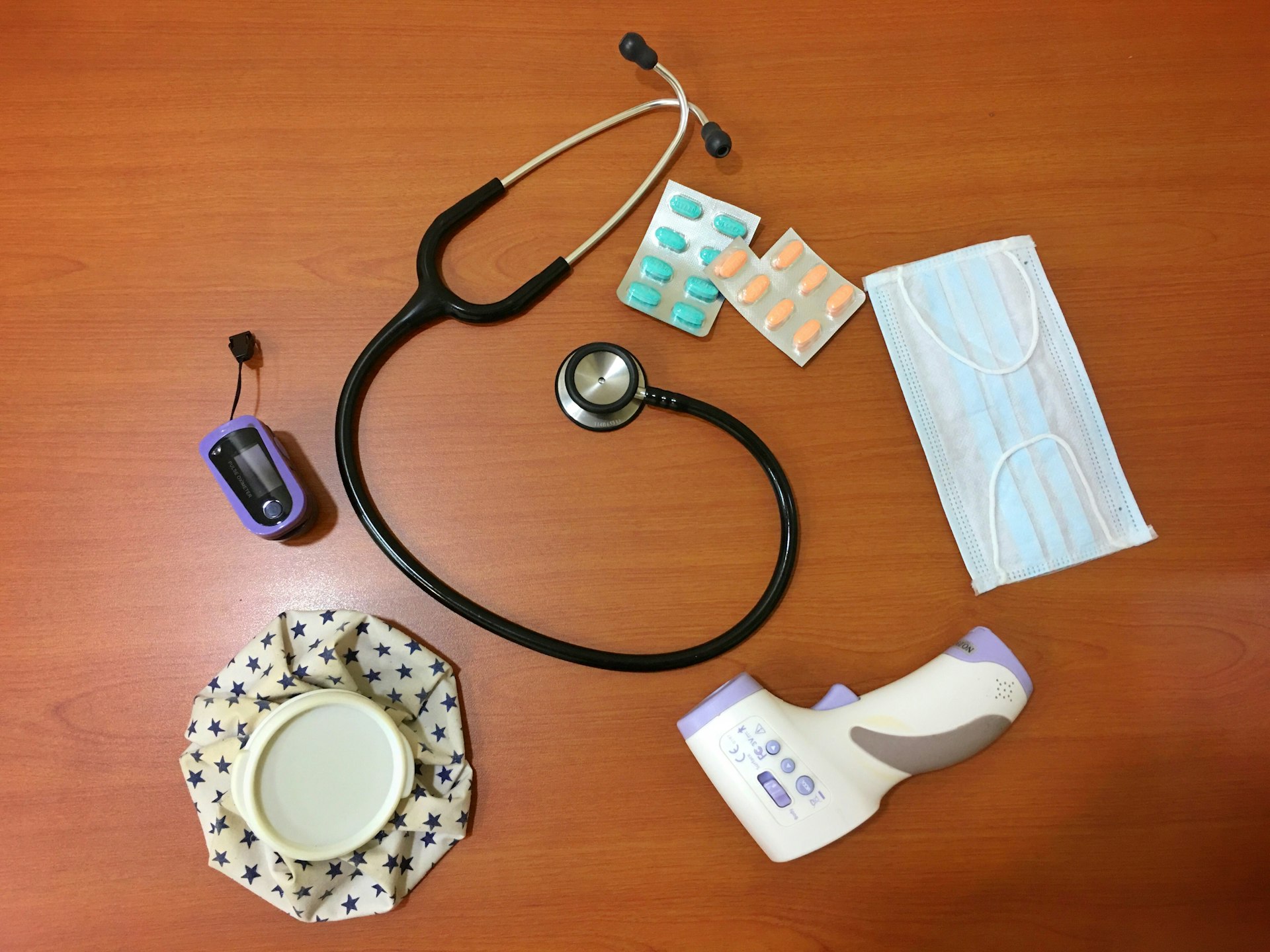Transforming Healthcare: The Future of Wearable Health Monitoring Implants

Photo by Haidan on Unsplash
Introduction: The Next Leap in Health Monitoring
Wearable health monitoring implants are rapidly emerging as a transformative force in healthcare. These devices, ranging from smart pacemakers to neural implants, offer continuous, real-time insights into a patient’s health and promise to personalize preventive care, extend autonomy, and reduce the need for invasive procedures. As technology advances, the integration of artificial intelligence (AI), big data analytics, and sophisticated sensor systems is propelling these implants into mainstream medicine, making healthcare more proactive and accessible than ever before [2] .
Smart Implants: Real-Time Monitoring and Autonomous Care
The future of smart implants is defined by their ability to monitor internal body functions in real time and autonomously adjust treatments. For example, modern pacemakers go beyond regulating heart rhythms; they continuously track cardiac health and communicate with external devices, sending alerts and, in some cases, autonomously making adjustments to therapy [1] . This shift reduces the frequency of routine doctor visits and invasive interventions, empowering patients to manage their health with greater independence.
Ingestible sensors-commonly called “smart pills”-are another innovation poised to become mainstream. These tiny devices, once swallowed, monitor gastrointestinal health, providing detailed data on gut function, pH levels, and temperature, which is especially valuable for those with digestive disorders [1] . Physicians can use this information to tailor treatments, improving accuracy and outcomes while minimizing discomfort.
Expanding Applications: From Neurological Disorders to Chronic Disease
Implantable devices are not limited to cardiac and digestive monitoring. Projects like Neuralink-a brain-computer interface-aim to address neurological disorders, enhance memory, and potentially treat conditions such as Parkinson’s disease, Alzheimer’s, depression, and anxiety by directly interacting with the brain [2] . While such technologies are in early stages, their potential to change lives is profound.
Continuous glucose monitors (CGMs), such as the Dexcom G7 and Abbott FreeStyle Libre 3, are already revolutionizing diabetes management by delivering real-time glucose readings without finger pricks. These devices send data to smartphones, alerting users and caregivers to dangerous fluctuations [3] . Similar technology is being adapted for other chronic conditions, extending the benefits of continuous, minimally invasive monitoring.
AI and Big Data: Personalized, Predictive, and Preventive Care
The integration of AI and machine learning with wearable implants is unlocking new possibilities for personalized healthcare. Advanced algorithms process vast datasets generated by these devices, filtering out noise and identifying meaningful health patterns [4] . This enables predictive analytics-identifying risk factors and forecasting health events before they occur-so interventions can be timely, targeted, and effective.

Photo by Vishnu Mohanan on Unsplash
Healthcare organizations are increasingly adopting interoperable platforms to connect wearable data with electronic health records and clinical decision support tools. Training clinicians to interpret wearable analytics and integrating this information into workflows is essential for success. Patients, too, play a role: engaging with their own data and participating in care models enhances self-management and adherence to treatment plans [5] .
Practical Steps to Access Wearable Health Implants
For individuals interested in wearable health monitoring implants, here are actionable steps to begin exploring these technologies:
- Consult with Healthcare Providers: Discuss your interest in health monitoring implants with your primary care physician or relevant specialists. They can assess your needs and determine your eligibility for specific devices, such as CGMs or cardiac implants.
- Insurance Coverage: Many implants and wearable monitors may be covered by health insurance, especially for chronic conditions. Contact your insurance provider to confirm coverage and requirements for approval.
- Device Selection: Research FDA-approved devices and ask your doctor about options that suit your condition. For example, if you have diabetes, inquire about the latest CGMs; for cardiac issues, ask about smart pacemakers. You can find verified product information, clinical studies, and patient reviews on official manufacturer websites and reputable medical portals.
- Clinical Trials and Research Programs: If you are interested in cutting-edge implants, consider participating in clinical trials. You can search the National Institutes of Health’s ClinicalTrials.gov database for current studies involving smart implants and wearable health monitors. Always verify the legitimacy of any clinical trial and consult your healthcare provider before enrolling.
- Patient Advocacy Groups: Many organizations provide resources, support, and guidance for accessing new medical technologies. For diabetes, groups like the American Diabetes Association offer information on CGMs; for neurological disorders, check with the Parkinson’s Foundation or Alzheimer’s Association. Visit their official websites or contact them directly for up-to-date guidance.
Challenges and Solutions
Despite their promise, wearable health monitoring implants face several challenges:
- Data Accuracy and Standardization: Variability in data collection methods can impact the reliability of health insights. Researchers are working to improve sensor sensitivity and create standardized protocols for analysis [4] .
- Privacy and Security: With more health data being transmitted and stored electronically, robust encryption and access controls are essential to protect patient privacy. Look for devices that are compliant with current healthcare data regulations (such as HIPAA in the U.S.).
- Integration with Healthcare Systems: Seamless connection between implants and electronic health records can be complex. Healthcare organizations are investing in interoperable data platforms and APIs to facilitate this integration [5] .
- Patient Engagement: Education and support are critical to ensure patients understand how to use their devices effectively and engage with their health data. Many providers offer training and support programs for new device users.
To overcome these challenges, patients and providers should prioritize devices with strong regulatory approval, comprehensive support systems, and demonstrated clinical efficacy.
Alternative Approaches and Future Opportunities
If full implantable devices are not suitable, alternative wearables such as smart watches, rings, and patches offer robust health monitoring capabilities. Devices like the Oura Ring, Empatica Embrace, and WHOOP strap provide valuable insights into sleep, activity, heart rate, and even seizure activity, helping users and clinicians manage health proactively [3] .
Integration with smart home sensors and telemedicine platforms continues to expand access to care, especially for underserved or rural populations. As technology evolves, the possibilities for personalized, preventive healthcare will only grow.
Key Takeaways
Wearable health monitoring implants are redefining the patient experience by delivering real-time data, enabling personalized treatment, and facilitating preventive interventions. With advances in AI, data analytics, and sensor technology, these devices are set to become a central feature of healthcare in the coming years. Patients and providers should stay informed, actively seek verified information, and leverage support from medical professionals and advocacy organizations to access these transformative technologies.
References
- [1] Health 2.0 Conference (2025). How Medical Gadgets Will Transform Patient Care in 2025.
- [2] Topflight Apps (2025). Integrating Wearable Technology in Healthcare.
- [3] Sermo (2025). Wearable Health Devices: Examples & 2025 Technology Trends.
- [4] Frontiers in Analytical Science (2025). Future Directions: Smart Biochemical Wearables.
- [5] Augnito AI (2025). AI and Wearable Health Tech: 5 Forecasts for the Future.



